It looks like you're using an Ad Blocker.
Please white-list or disable AboveTopSecret.com in your ad-blocking tool.
Thank you.
Some features of ATS will be disabled while you continue to use an ad-blocker.
share:
originally posted by: All Seeing Eye
a reply to: Hanslune
Deleted a lot of goofy stuff
So, still no evidence and still running like a scalded cat from questions huh? LOL
...and corruption about hiring and ties to the third world and the failed Soviet union doesn't mean they are doing what you are making up. Can you show evidence that they are a world wide organization trying to control the archaeological narrative for x reason?
Why does this question frighten you so? Is your fragile fantasy world that brittle? Remember YOU made the claim. If you refuse to defend it then you concede you were wrong.
So, is that caused by your being wrong about Atlantis being not where Plato said and his whole idea not working in the real world. Is that what has made you so angry?
I recommend you go and try to find some evidence to support your assertion instead of paranoid ranting. As Harte said you seem long on irrational tirades and short on evidence.
a reply to: Hanslune
Yippiii
So now you understand there was water there, lots of it. The rings were filled, rivers ran, and lakes were formed. The African Humid Period.
Now, it dried up about 5500-4000 or in that pall park. Would you like me to use Geologic terms?
So, all the river basins are still there, but filled with sand instead of water. Do you agree? Science backs that up, you agree with science?
So again, EVIDENCE.
Large abandon community on what appears to be a extinct river.. And appears to be mud brick construction.?
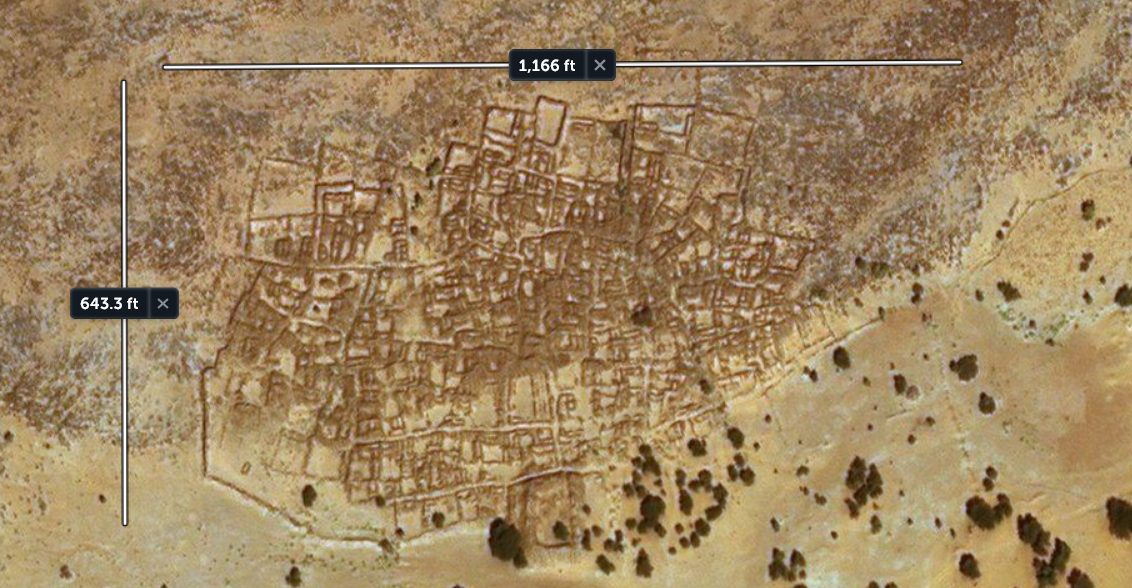
Now show me the information on this site that was visited by archeologists. This is really there so it must be evident of something. Its evidence someone lived there.
Island in extinct river with ancient ruins on them?
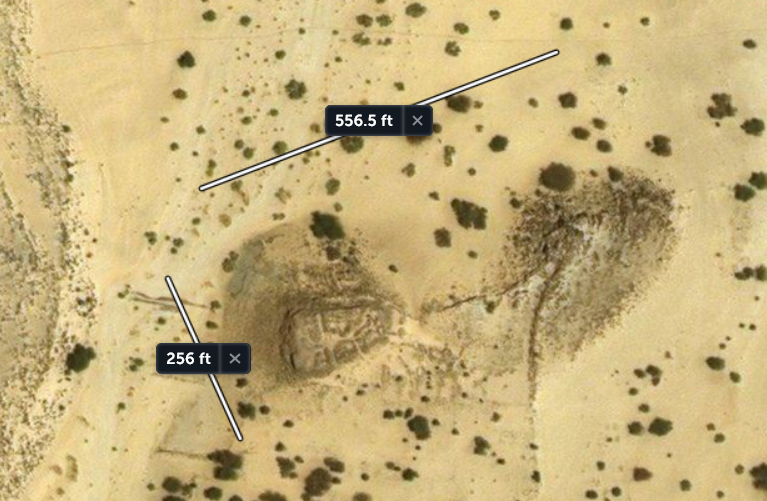
Ancient boat dock on a extinct river shore? Quadane.
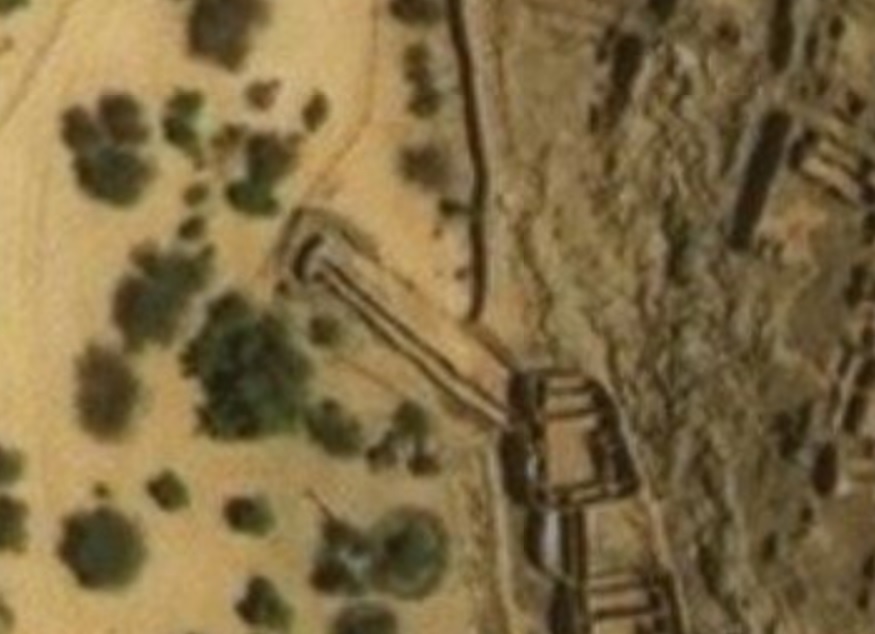
Ouadane
So this isn't evidence? Is it non sense?
Now you admit water was present. You admit water could have been present in those channels. Is it so hard to admit the possibility of people building on the shores of that water?
Yippiii
So some of it is actually getting through.
Yep there was water there but it was fresh and not the sea.
So now you understand there was water there, lots of it. The rings were filled, rivers ran, and lakes were formed. The African Humid Period.
Now, it dried up about 5500-4000 or in that pall park. Would you like me to use Geologic terms?
So, all the river basins are still there, but filled with sand instead of water. Do you agree? Science backs that up, you agree with science?
So again, EVIDENCE.
Large abandon community on what appears to be a extinct river.. And appears to be mud brick construction.?

Now show me the information on this site that was visited by archeologists. This is really there so it must be evident of something. Its evidence someone lived there.
Island in extinct river with ancient ruins on them?

Ancient boat dock on a extinct river shore? Quadane.

The early history of Ouadane is uncertain
Ouadane
So this isn't evidence? Is it non sense?
Now you admit water was present. You admit water could have been present in those channels. Is it so hard to admit the possibility of people building on the shores of that water?
originally posted by: All Seeing Eye
The early history of Ouadane is uncertain
Ouadane
So this isn't evidence? Is it non sense?
As with your various satellite images, it's evidence that people have been living in the region for hundreds of years.
Nothing more.
Whilst satellites may aid archaeology, they are not a substitute for it.
a reply to: AndyMayhew
Mauritania Rock Art results suggest it was occupied by human beings, much earlier.
Mauritania is rich in rock art sites, particularly in the south eastern parts such as Guilemsi which occurs on a sandstone ridge in the Tagant District. Paintings are found in the walled shelters and on stonewall banks of a dry river. Images include camels, horsemen, cattle, wild animals and a few geometric designs belonging to the fourth and third millennia.
Introduction to rock art in northern Africa The Sahara is the largest non-polar desert in the world, covering almost 8,600,000 km² and comprising most of northern Africa, from the Red Sea to the Atlantic Ocean. Although it is considered a distinct entity, it is composed of a variety of geographical regions and environments, including sand seas, hammadas (stone deserts), seasonal watercourses, oases, mountain ranges and rocky plains. Rock art is found throughout this area, principally in the desert mountain and hill ranges, where stone ‘canvas’ is abundant: the highlands of Adrar in Mauritania and Adrar des Ifoghas in Mali, the Atlas Mountains of Morocco and Algeria, the Tassili n’Ajjer and Ahaggar Mountains in Algeria, the mountainous areas of Tadrart Acacus and Messak in Libya, the Aïr Mountains of Nigeria, the Ennedi Plateau and Tibesti Mountains in Chad, the Gilf Kebir plateau of Egypt and Sudan, as well as the length of the Nile Valley.
Throughout northern Africa, there is a wealth of rock art depicting the domestic horse and its various uses, providing valuable evidence for the uses of horses at various times in history, as well as a testament to their importance to Saharan peoples.
So if you take into consideration that the African Humid Period ended around 5500bc - 4000bc, and Human beings occupied the area from at least 7000bc, that leaves a window of at least 3000 years the African Human Period being occupied by a very "Artistic", intelligent population.
Now, where do you suppose they would choose to live? They had rocks, and mud to build with, and maybe some wood.
Yes, modern man has lived in the area for hundred of years, but the evidence suggest a time much deeper into the past. What do you suppose those people could accomplish in 3000 years? Build Communities?
The Sat images suggest they did just that. Science says there were people there. Do you seriously believe they only produced "Art" all day, every day for 3000 years?
Are you going to say the rock art proves nothing?
Its true, Sat images can only supply only so much information. But, as I have said before, the evidence must be considered together, not individually. I believe "Nothing more" is incorrect.
As with your various satellite images, it's evidence that people have been living in the region for hundreds of years.
Nothing more.
Mauritania Rock Art results suggest it was occupied by human beings, much earlier.
The rock art covers a time from the Hunters Period: 7,000 – 2,500 BC to the Camel Period: about 100 BC.
Mauritania is rich in rock art sites, particularly in the south eastern parts such as Guilemsi which occurs on a sandstone ridge in the Tagant District. Paintings are found in the walled shelters and on stonewall banks of a dry river. Images include camels, horsemen, cattle, wild animals and a few geometric designs belonging to the fourth and third millennia.
Introduction to rock art in northern Africa The Sahara is the largest non-polar desert in the world, covering almost 8,600,000 km² and comprising most of northern Africa, from the Red Sea to the Atlantic Ocean. Although it is considered a distinct entity, it is composed of a variety of geographical regions and environments, including sand seas, hammadas (stone deserts), seasonal watercourses, oases, mountain ranges and rocky plains. Rock art is found throughout this area, principally in the desert mountain and hill ranges, where stone ‘canvas’ is abundant: the highlands of Adrar in Mauritania and Adrar des Ifoghas in Mali, the Atlas Mountains of Morocco and Algeria, the Tassili n’Ajjer and Ahaggar Mountains in Algeria, the mountainous areas of Tadrart Acacus and Messak in Libya, the Aïr Mountains of Nigeria, the Ennedi Plateau and Tibesti Mountains in Chad, the Gilf Kebir plateau of Egypt and Sudan, as well as the length of the Nile Valley.
The domesticated horse in northern African rock art
Throughout northern Africa, there is a wealth of rock art depicting the domestic horse and its various uses, providing valuable evidence for the uses of horses at various times in history, as well as a testament to their importance to Saharan peoples.
So if you take into consideration that the African Humid Period ended around 5500bc - 4000bc, and Human beings occupied the area from at least 7000bc, that leaves a window of at least 3000 years the African Human Period being occupied by a very "Artistic", intelligent population.
Now, where do you suppose they would choose to live? They had rocks, and mud to build with, and maybe some wood.
Yes, modern man has lived in the area for hundred of years, but the evidence suggest a time much deeper into the past. What do you suppose those people could accomplish in 3000 years? Build Communities?
The Sat images suggest they did just that. Science says there were people there. Do you seriously believe they only produced "Art" all day, every day for 3000 years?
Are you going to say the rock art proves nothing?
a reply to: AndyMayhew
And Archaeology, is enhanced with Satellite images. They are not enemies, they are allies!
Now we have water, we have art, and we have structures. We also have ROADS! Of course it all must be confirmed by open minded, free thinking Archeologists. Again, the timeline starts at 7000bc, and ends around 4000bc. Did these people also build roads? The evidence again suggests, yes.
How do you "Date" a road? This road network is well defined, irregular in its width, and appears as though it's built by piling up rocks along its length. It appears to be made by hand because of the irregular width. Once Archeologists get to them it may be possible to date any bio based materials that are under the rocks. Of course this will most likely give a date range of that section only. Other sections may have differing ages. But some of the sections will be quite easy, as some of them are actually incorporated into ancient sites, and untouched.
The area in green contains many ruins and pinning each one is out of the question. The blue lines are visible sections of road. There are many areas like this in the area, and others.

Closeups of the two blue lines.
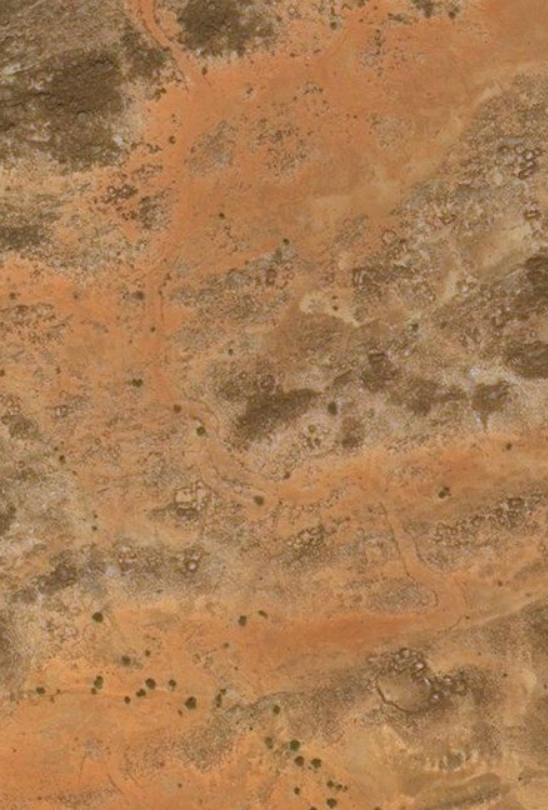
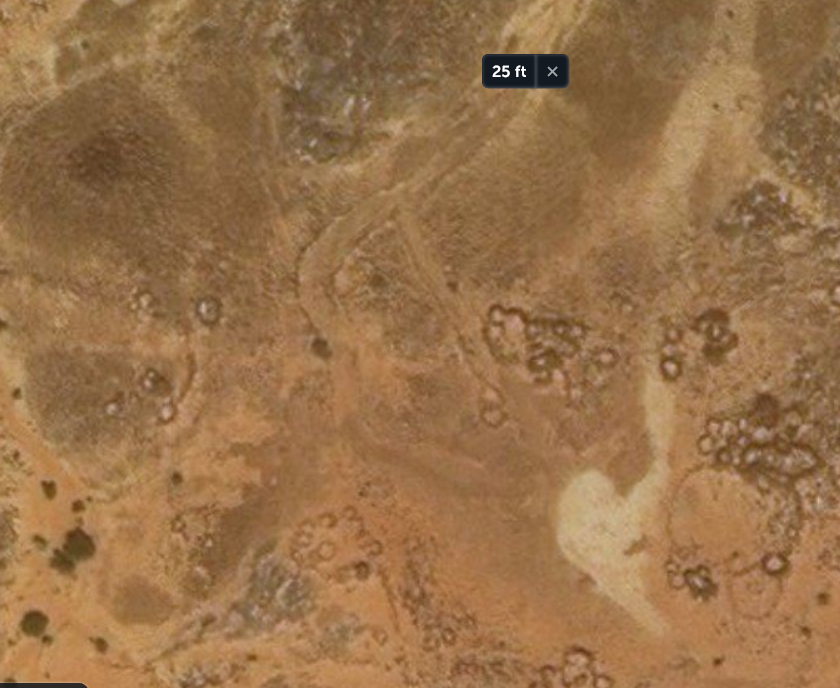
These road section are all over the region and some are very close to the Richat itself. None, if they were ever there did not survive the "Flood". But it did in surrounding areas. Again, awaiting conformation. The following are but a few..

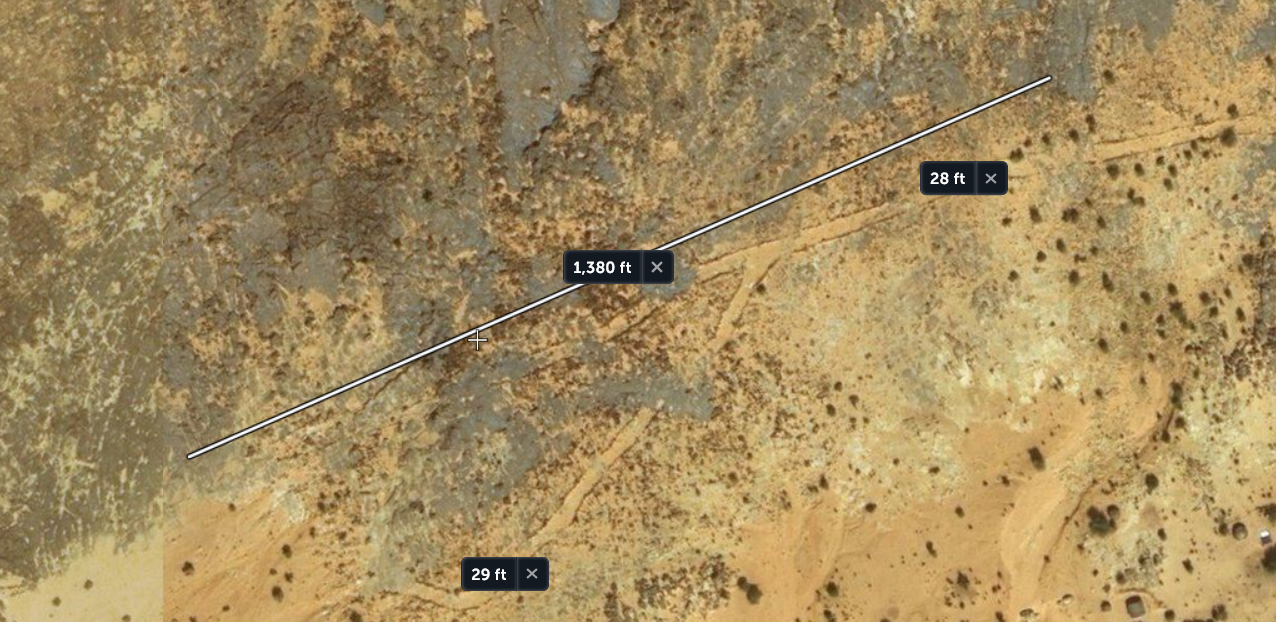
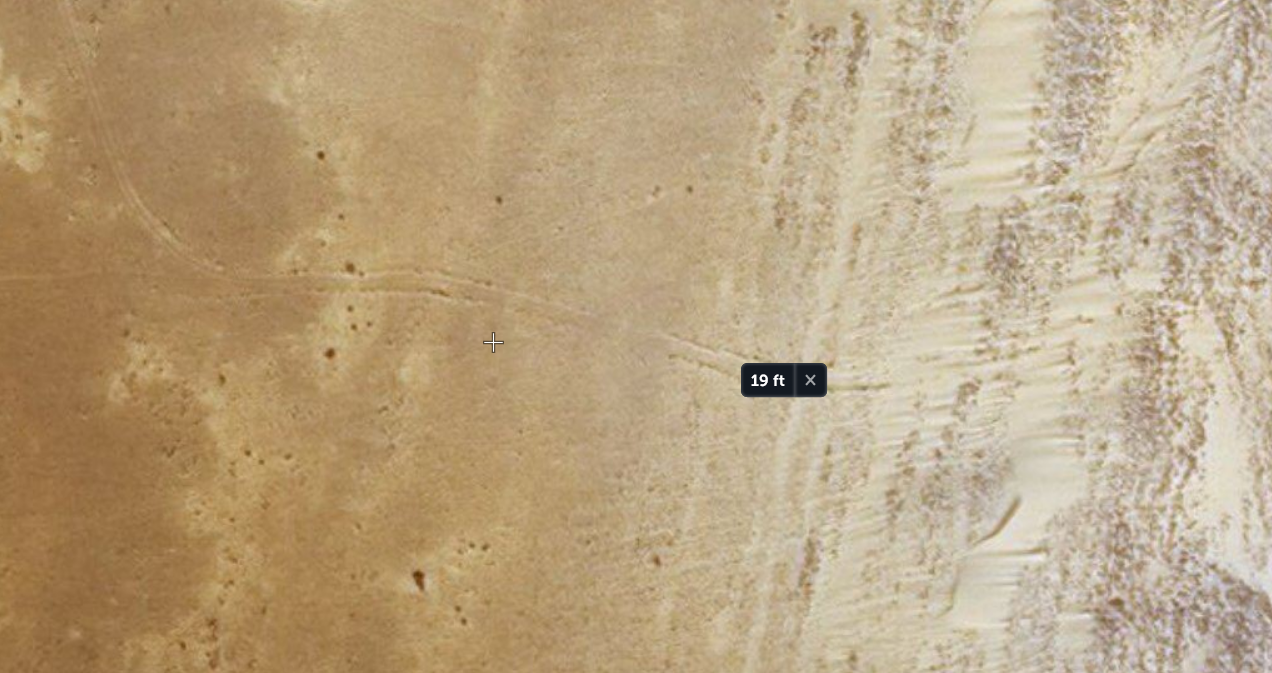
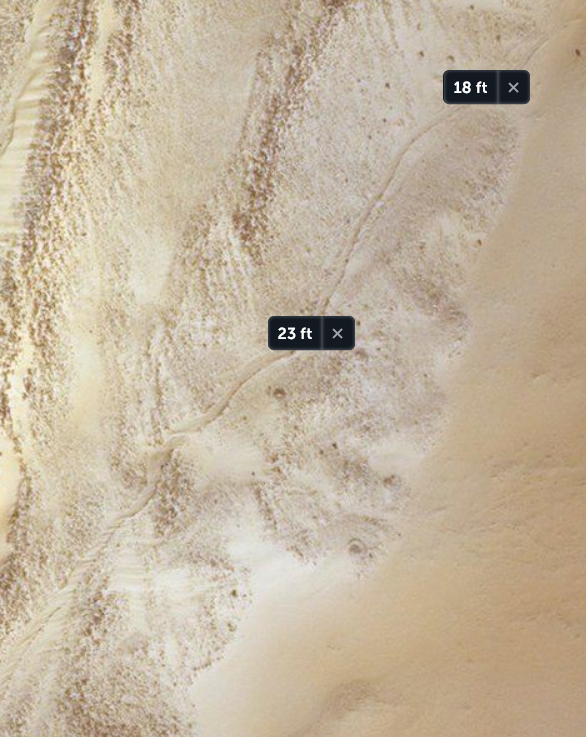

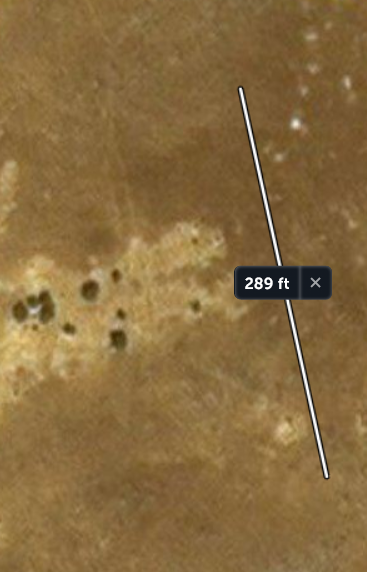
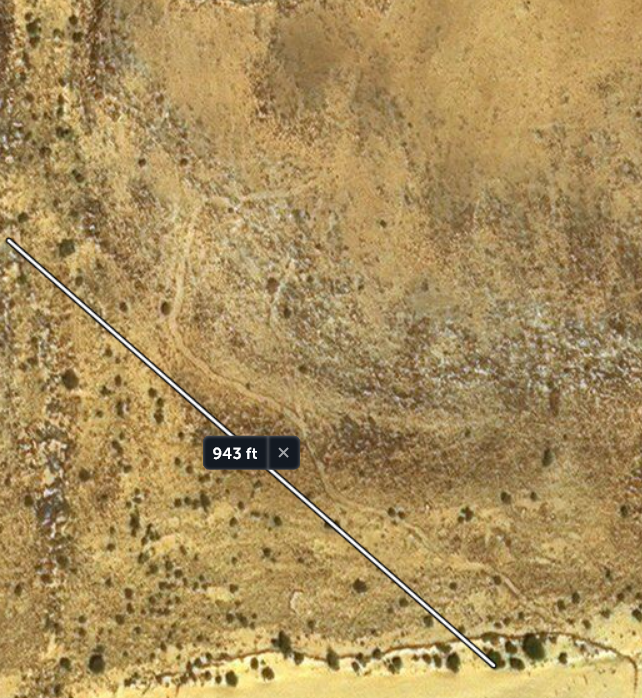

Many of these sections go nowhere, and come from, nowhere. Some have been used by modern man, while most lay unused. Many of the sections are heavily weathered and are completely gone. Some of the sections show great flooding.
So now we possibly have a artistic, intelligent, structure building, road building, society. When that is, all the evidence is viewed, together, and confirmed.
And Archaeology, is enhanced with Satellite images. They are not enemies, they are allies!
Now we have water, we have art, and we have structures. We also have ROADS! Of course it all must be confirmed by open minded, free thinking Archeologists. Again, the timeline starts at 7000bc, and ends around 4000bc. Did these people also build roads? The evidence again suggests, yes.
How do you "Date" a road? This road network is well defined, irregular in its width, and appears as though it's built by piling up rocks along its length. It appears to be made by hand because of the irregular width. Once Archeologists get to them it may be possible to date any bio based materials that are under the rocks. Of course this will most likely give a date range of that section only. Other sections may have differing ages. But some of the sections will be quite easy, as some of them are actually incorporated into ancient sites, and untouched.
The area in green contains many ruins and pinning each one is out of the question. The blue lines are visible sections of road. There are many areas like this in the area, and others.

Closeups of the two blue lines.


These road section are all over the region and some are very close to the Richat itself. None, if they were ever there did not survive the "Flood". But it did in surrounding areas. Again, awaiting conformation. The following are but a few..








Many of these sections go nowhere, and come from, nowhere. Some have been used by modern man, while most lay unused. Many of the sections are heavily weathered and are completely gone. Some of the sections show great flooding.
So now we possibly have a artistic, intelligent, structure building, road building, society. When that is, all the evidence is viewed, together, and confirmed.
Harte may need new glasses. Though I doubt it would make any difference, because he wouldn't use them anyways... I have posted over and over on these things.
As Harte said you seem long on irrational tirades and short on evidence.
originally posted by: All Seeing Eye
Are you going to say the rock art proves nothing?
Depends are you trying to show that people live and lived there? That is already known and well established scientifically.
The thread is titled, 'Atlantis has been discovered?'
Humans living in an area is not proof they were Atlanteans as a matter of fact it is evidence that the place you are all excited about wasn't where Plato was talking about as he said it sank - this place ain't sanked or sunk. lol
There is one source for Atlantis:
This power came forth out of the Atlantic Ocean, for in those days the Atlantic was navigable; and there was an island situated in front of the straits which are by you called the Pillars of Heracles; the island was larger than Libya and Asia put together, and was the way to other islands, and from these you might pass to the whole of the opposite continent which surrounded the true ocean; for this sea which is within the Straits of Heracles is only a harbour, having a narrow entrance, but that other is a real sea, and the surrounding land may be most truly called a boundless continent. Now in this island of Atlantis there was a great and wonderful empire which had rule over the whole island and several others, and over parts of the continent, and, furthermore, the men of Atlantis had subjected the parts of Libya within the columns of Heracles as far as Egypt, and of Europe as far as Tyrrhenia. This vast power, gathered into one, endeavoured to subdue at a blow our country and yours and the whole of the region within the straits; and then, Solon, your country shone forth, in the excellence of her virtue and strength, among all mankind. She was pre-eminent in courage and military skill, and was the leader of the Hellenes. And when the rest fell off from her, being compelled to stand alone, after having undergone the very extremity of danger, she defeated and triumphed over the invaders, and preserved from slavery those who were not yet subjugated, and generously liberated all the rest of us who dwell within the pillars. But afterwards there occurred violent earthquakes and floods; and in a single day and night of misfortune all your warlike men in a body sank into the earth, and the island of Atlantis in like manner disappeared in the depths of the sea. For which reason the sea in those parts is impassable and impenetrable, because there is a shoal of mud in the way; and this was caused by the subsidence of the island.
So, does that match the millions of year old geological feature in Mauritania? Nope
classics.mit.edu...
have before remarked in speaking of the allotments of the gods, that they distributed the whole earth into portions differing in extent, and made for themselves temples and instituted sacrifices. And Poseidon, receiving for his lot the island of Atlantis, begat children by a mortal woman, and settled them in a part of the island, which I will describe. Looking towards the sea, but in the centre of the whole island, there was a plain which is said to have been the fairest of all plains and very fertile. Near the plain again, and also in the centre of the island at a distance of about fifty stadia, there was a mountain not very high on any side. In this mountain there dwelt one of the earth born primeval men of that country, whose name was Evenor, and he had a wife named Leucippe, and they had an only daughter who was called Cleito. The maiden had already reached womanhood, when her father and mother died; Poseidon fell in love with her and had intercourse with her, and breaking the ground, inclosed the hill in which she dwelt all round, making alternate zones of sea and land larger and smaller, encircling one another; there were two of land and three of water, which he turned as with a lathe, each having its circumference equidistant every way from the centre, so that no man could get to the island, for ships and voyages were not as yet. He himself, being a god, found no difficulty in making special arrangements for the centre island, bringing up two springs of water from beneath the earth, one of warm water and the other of cold, and making every variety of food to spring up abundantly from the soil. He also begat and brought up five pairs of twin male children; and dividing the island of Atlantis into ten portions, he gave to the first-born of the eldest pair his mother's dwelling and the surrounding allotment, which was the largest and best, and made him king over the rest; the others he made princes, and gave them rule over many men, and a large territory. And he named them all; the eldest, who was the first king, he named Atlas, and after him the whole island and the ocean were called Atlantic. To his twin brother, who was born after him, and obtained as his lot the extremity of the island towards the Pillars of Heracles, facing the country which is now called the region of Gades in that part of the world, he gave the name which in the Hellenic language is Eumelus, in the language of the country which is named after him, Gadeirus. Of the second pair of twins he called one Ampheres, and the other Evaemon. To the elder of the third pair of twins he gave the name Mneseus, and Autochthon to the one who followed him. Of the fourth pair of twins he called the elder Elasippus, and the younger Mestor. And of the fifth pair he gave to the elder the name of Azaes, and to the younger that of Diaprepes. All these and their descendants for many generations were the inhabitants and rulers of divers islands in the open sea; and also, as has been already said, they held sway in our direction over the country within the Pillars as far as Egypt and Tyrrhenia.
So, do you think Poseidon existed?
edit on 17/5/22 by Hanslune because: (no reason given)
a reply to: All Seeing Eye
In a desert, you will find many roads, many to salt mines and old wells in that area. when an oasis dried up the road stopped being used.
In a desert, you will find many roads, many to salt mines and old wells in that area. when an oasis dried up the road stopped being used.
a reply to: dragonridr
While reading about Hippocrates (lived between the 5th and the 4th century BCE), and cures for scurvy I found a treatment suggestion to “make a kykeon” with several ingredients, each time different, there were many kykeon variants..
Plato celebrated the Eleusinian Mysteries with the ancient Greeks.
The Richat structure is a lava dome that collapsed and suffered surface erosion over the millennia, tectonic plate migration produced the molten magma jet that almost surfaced.
That is much different than the pleasure dome in Samuel Taylor Coleridge's Kubla Khan.
Plato suggested an earthquake caused the sinking of Atlantis but it was a person from Porlock that interrupted Coleridge and caused him to forget the rest of his poem.
Must be that damn eye of Horus..
Which makes me wonder how you make glasses for the Egyptian eye of Ra - eye of Horace.
I'm over reading about the 1887 Michelson Morley experiment to measure the direction of the aether wind.
Thought they would have known better from the start but perhaps they were doing something else that justified the expense?
While reading about Hippocrates (lived between the 5th and the 4th century BCE), and cures for scurvy I found a treatment suggestion to “make a kykeon” with several ingredients, each time different, there were many kykeon variants..
Plato celebrated the Eleusinian Mysteries with the ancient Greeks.
There, at the Temple of Demeter, participants would drink a potion—kykeon—containing barley, mint and water. It is widely believed that the kykeon contained too a psychedelic element.
The Richat structure is a lava dome that collapsed and suffered surface erosion over the millennia, tectonic plate migration produced the molten magma jet that almost surfaced.
That is much different than the pleasure dome in Samuel Taylor Coleridge's Kubla Khan.
In Xanadu did Kubla Khan A stately pleasure dome decree: Where Alph, the sacred river, ran Through caverns measureless to man Down to a sunless sea.
Plato suggested an earthquake caused the sinking of Atlantis but it was a person from Porlock that interrupted Coleridge and caused him to forget the rest of his poem.
Must be that damn eye of Horus..
Which makes me wonder how you make glasses for the Egyptian eye of Ra - eye of Horace.
I'm over reading about the 1887 Michelson Morley experiment to measure the direction of the aether wind.
Thought they would have known better from the start but perhaps they were doing something else that justified the expense?
edit on 17-5-2022 by fromunclexcommunicate because: (no reason given)
Please point to your example of this, in the images I have shared.
originally posted by: dragonridr
a reply to: All Seeing Eye
In a desert, you will find many roads, many to salt mines and old wells in that area. when an oasis dried up the road stopped being used.
originally posted by: All Seeing Eye
Please point to your example of this, in the images I have shared.
originally posted by: dragonridr
a reply to: All Seeing Eye
In a desert, you will find many roads, many to salt mines and old wells in that area. when an oasis dried up the road stopped being used.
Please point to any example of anything with meaning in any of the images you have shared.
Harte
originally posted by: All Seeing Eye
How do you "Date" a road?
By archaeology. Not by looking at modern satelite images (if you had some frm a few thousand years ago to compare with, that would be a different matter)
So now we possibly have a artistic, intelligent, structure building, road building, society. When that is, all the evidence is viewed, together, and confirmed.
Which we now has existed there for hundreds of years
And yes, we also know there were hunter gatherers living in the region during the AHP. However, there is exactly zero evidence of any kind to suggest that thousands of years ago they built cities, invaded Egypt and fought against Athens (long before either existed).
Meanwhile, the Richat structure is an ancient geological feature. One which looks deceptively impressive in false colour satellite images, but on the ground if barely recognisable. It's no more the remains of an ancient city than Loch Lomond is the remains of an ancient swimming pool built to teach haggis how to swim.
a reply to: AndyMayhew
So this is nothing more than a couple of hundred of years old? If that were the case the history books would be filled with information of this Stone building society, that also built roads. Please provide this information.

Also, please provide the archeological research concerning this site, its name for starters.

And while your at it, share the information concerning this object.
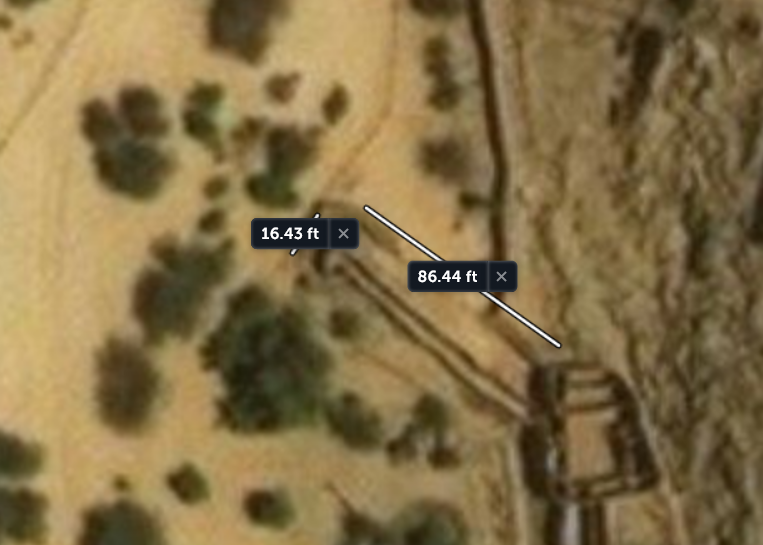
Which we now has existed there for hundreds of years
So this is nothing more than a couple of hundred of years old? If that were the case the history books would be filled with information of this Stone building society, that also built roads. Please provide this information.

Also, please provide the archeological research concerning this site, its name for starters.

And while your at it, share the information concerning this object.

originally posted by: All Seeing Eye
a reply to: AndyMayhew
Which we now has existed there for hundreds of years
So this is nothing more than a couple of hundred of years old? If that were the case the history books would be filled with information of this Stone building society, that also built roads. Please provide this information.
To be fair, I don't own any history books on tribe of the Mauritanian desert or about the Saharan salt trade. But I am sure if you found one you'd read plenty about he people who built such structures. They problem won't be in the Times Best Seller section of your local bookshop though.
Meanwhile, see also:
en.wikipedia.org...
And the fact some ruined walls you identified on a modern satellite have not been extensively excavated does not necessarily mean they are the remains of a 10,000 year old lost civilisation. You need to offer better than that.
An interesting read:
en.wikipedia.org...
Such a increase in desertification across the country raises the possibility that the various structures identified from satellite images may be amongst those abandoned within just the past few decades.
Obviously we can't know for sure without more info. But at least as likely as them being more than 10,000 years old.
The climate has altered drastically since the onset of the prolonged drought in the 1960s, part of a recurrent pattern of wet and dry cycles common to Sahelian Africa. Experts agree, however, that overgrazing, deforestation, denuding of ground cover around wells, poor farming methods, and overpopulation have aggravated the drought. In Mauritania the isohyet indicating annual rainfall of 150 millimetres—considered the minimum for pastoralism—has shifted southward about 100 kilometres to a point well south of Nouakchott. During the 1980s, the desert was advancing southward at an estimated rate of six kilometres a year. Each major climatic zone had shifted southward, and in some cases near-desert conditions had reached the banks of the Senegal River.
By the late 1980s, desertification had fundamentally altered agro-pastoral and human settlement patterns. Loss of ground cover in the Sahelian Zone had driven animals and people southward in search of food and water and had given rise to new fields of sand dunes. The advancing dunes threatened to engulf wells, villages, and roads; they had even invaded Nouakchott on their march to the sea.
en.wikipedia.org...
Such a increase in desertification across the country raises the possibility that the various structures identified from satellite images may be amongst those abandoned within just the past few decades.
Obviously we can't know for sure without more info. But at least as likely as them being more than 10,000 years old.
originally posted by: All Seeing Eye
a reply to: HanslunePlease reply to the questions in previous posts. Not going to consider anything more until you do. Yes.
I already did, you just didn't like the answer. Your question about water, Mars and DNA has no answer as it is as meaningful as asking if 19th century cannons preferred Earl Grey to Irish Breakfast tea.
Try rephrasing the question so it makes sense.
originally posted by: AndyMayhew
originally posted by: All Seeing Eye
a reply to: AndyMayhew
Which we now has existed there for hundreds of years
So this is nothing more than a couple of hundred of years old? If that were the case the history books would be filled with information of this Stone building society, that also built roads. Please provide this information.
To be fair, I don't own any history books on tribe of the Mauritanian desert or about the Saharan salt trade. But I am sure if you found one you'd read plenty about he people who built such structures. They problem won't be in the Times Best Seller section of your local bookshop though.
Meanwhile, see also:
en.wikipedia.org...
And the fact some ruined walls you identified on a modern satellite have not been extensively excavated does not necessarily mean they are the remains of a 10,000 year old lost civilisation. You need to offer better than that.
He cannot which is why you get all this spew and prancing about avoiding questions. He keeps trying to shift the burden of proof away from HIS claim that it is Atlantis - he has none, and it is clear he has never actually READ what Plato wrote and is just repeating what he was told to believe from U-tube videos.
a reply to: AndyMayhew
I seriously doubt people in the 1960s have changed their building style that much. Plus, no modern technology can be seen in these "Abandoned" areas. I have seen modern abandonment's this is true, but the style of building is reflective of the time and I do not document them.
I do not claim these images represent ruins of 10,000 years. I only point out that logically, in the volume and the locations they are found in, must be associated with the AHP. People do not settle in the numbers seen, in the d esert with no abundance of water. So they must come from before the end of the AHP. And that, again, is between 5500-4000bc.
I don't think anyone would argue that most ancient sites can be found around water supply's. River banks, lakes, ocean, etc. Again, this area is actually next to a long, would have been, a finger lake in the AHP. At its height it was a lake full of water (ruins are found at the tops of the cliffs) and as time passed going down to a river, then to a stream, the sites go lower into the valley, closer to the water. And now, the water has gone underground, if any. Modern man, builds on the ancient lake bed itself. And, its doubtful even the locals are aware of many of the ruins, or their size in the areas. Unless they happen to own a plane, helicopter, and fly over them.

There is but one reference to this society and it places the date in the 5th millennium . But, puts the numbers into a very few sites, that does not reflect the reality on the ground. Most of the sites also tend to start on the high cliffs and descend to the bottom, as the water becomes less and less. And virtually all the sites follow the same building technique of the given example.
One Sample given.
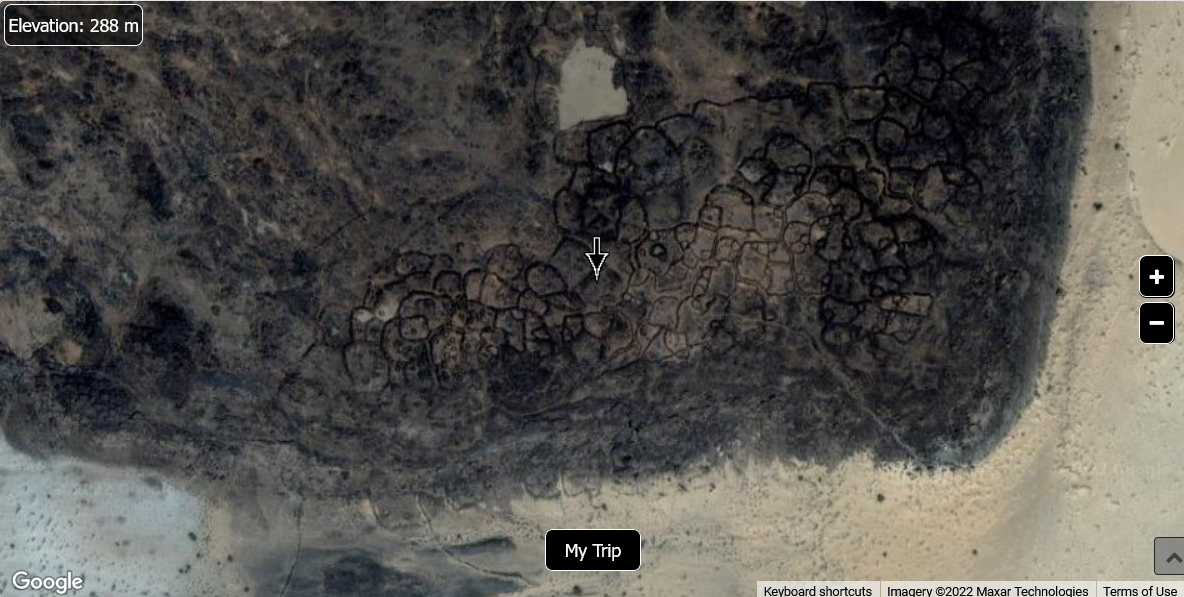
Dhar Tichitt is a Neolithic archaeological site located in the southwestern region of the Sahara Desert in Tagant Region, Mauritania. The site is one of several archaeological settlements of the Tichitt Culture that were located along the sandstone cliffs of the area, which also includes Dhar Walata, Dhar Néma, and Dhar Tagant. Tichitt Culture was a social structure and Saharan pastoral culture that developed among herders in the Sahara since the 5th millennium BC.
Once again the established timeline of human builders is put between 5000- 4000bc. Not, hundreds of years, thousands.
Some of the sites are a few dozen, to some, thousands of people. My guess. In total over the entire region, if you include children, millions. So to only reflect one site, is either simple ignorance, or intellectual dishonesty.
Such a increase in desertification across the country raises the possibility that the various structures identified from satellite images may be amongst those abandoned within just the past few decades.
Obviously we can't know for sure without more info. But at least as likely as them being more than 10,000 years old.
I seriously doubt people in the 1960s have changed their building style that much. Plus, no modern technology can be seen in these "Abandoned" areas. I have seen modern abandonment's this is true, but the style of building is reflective of the time and I do not document them.
I do not claim these images represent ruins of 10,000 years. I only point out that logically, in the volume and the locations they are found in, must be associated with the AHP. People do not settle in the numbers seen, in the d esert with no abundance of water. So they must come from before the end of the AHP. And that, again, is between 5500-4000bc.
I don't think anyone would argue that most ancient sites can be found around water supply's. River banks, lakes, ocean, etc. Again, this area is actually next to a long, would have been, a finger lake in the AHP. At its height it was a lake full of water (ruins are found at the tops of the cliffs) and as time passed going down to a river, then to a stream, the sites go lower into the valley, closer to the water. And now, the water has gone underground, if any. Modern man, builds on the ancient lake bed itself. And, its doubtful even the locals are aware of many of the ruins, or their size in the areas. Unless they happen to own a plane, helicopter, and fly over them.

To be fair, I don't own any history books on tribe of the Mauritanian desert or about the Saharan salt trade. But I am sure if you found one you'd read plenty about he people who built such structures. They problem won't be in the Times Best Seller section of your local bookshop though.
There is but one reference to this society and it places the date in the 5th millennium . But, puts the numbers into a very few sites, that does not reflect the reality on the ground. Most of the sites also tend to start on the high cliffs and descend to the bottom, as the water becomes less and less. And virtually all the sites follow the same building technique of the given example.
The 5th millennium BC spanned the years 5000 BC to 4001 BC (c. 7 ka to c. 6 ka). It is impossible to precisely date events that happened around the time of this millennium and all dates mentioned here are estimates mostly based on geological and anthropological analysis
Dhar Tichitt is a Neolithic archaeological site located in the southwestern region of the Sahara Desert in Tagant Region, Mauritania. The site is one of several archaeological settlements of the Tichitt Culture that were located along the sandstone cliffs of the area, which also includes Dhar Walata, Dhar Néma, and Dhar Tagant. Tichitt Culture was a social structure and Saharan pastoral culture that developed among herders in the Sahara since the 5th millennium BC.
One Sample given.

Dhar Tichitt is a Neolithic archaeological site located in the southwestern region of the Sahara Desert in Tagant Region, Mauritania. The site is one of several archaeological settlements of the Tichitt Culture that were located along the sandstone cliffs of the area, which also includes Dhar Walata, Dhar Néma, and Dhar Tagant. Tichitt Culture was a social structure and Saharan pastoral culture that developed among herders in the Sahara since the 5th millennium BC.
Once again the established timeline of human builders is put between 5000- 4000bc. Not, hundreds of years, thousands.
Some of the sites are a few dozen, to some, thousands of people. My guess. In total over the entire region, if you include children, millions. So to only reflect one site, is either simple ignorance, or intellectual dishonesty.
originally posted by: Hanslune
originally posted by: All Seeing Eye
a reply to: HanslunePlease reply to the questions in previous posts. Not going to consider anything more until you do. Yes.
I already did, you just didn't like the answer. Your question about water, Mars and DNA has no answer as it is as meaningful as asking if 19th century cannons preferred Earl Grey to Irish Breakfast tea.
Try rephrasing the question so it makes sense.
Your in the wrong post. Put where it belongs so I can Grey Rock you.
originally posted by: All Seeing Eye
a reply to: AndyMayhew
Once again the established timeline of human builders is put between 5000- 4000bc. Not, hundreds of years, thousands. Some of the sites are a few dozen, to some, thousands of people. My guess. In total over the entire region, if you include children, millions. So to only reflect one site, is either simple ignorance, or intellectual dishonesty.
Which has no bearing on a different site 100s of km away being Atlantis. Why do you keep beating this dead horse?
You need evidence that Atlantis was there not that people were there thousands of years later...D'uh
Your date for Dhar Tichitt is off the date is approximately 2500 to 500 BCE.
Holl, Augustin. "Coping with uncertainty: Neolithic life in the Dhar Tichitt-Walata, Mauritania, ( ca. 4000–2300 BP)
"Background to the Ghana Empire: archaeological investigations on the transition to statehood in the Dhar Tichitt region (Mauritania)". Journal of Anthropological Archaeology. 4 (2): 108.
www.researchgate.net...
You might want to talk to this guy.
new topics
-
Democrats send letter to Biden urging him to ratify Equal Rights Amendment
US Political Madness: 3 hours ago
top topics
-
Reprehensible Behavior
US Political Madness: 15 hours ago, 11 flags -
This is adorable you guys!
General Chit Chat: 14 hours ago, 8 flags -
Defending the need for adherence to Old Testament commandments under the new covenant of Christ
Conspiracies in Religions: 16 hours ago, 5 flags -
Democrats send letter to Biden urging him to ratify Equal Rights Amendment
US Political Madness: 3 hours ago, 1 flags
active topics
-
Defending the need for adherence to Old Testament commandments under the new covenant of Christ
Conspiracies in Religions • 25 • : nugget1 -
Rant. I am sick of people saying the police are revenue raising.
Rant • 13 • : PorkChop96 -
Only two Navy destroyers currently operational as fleet size hits record low
Military Projects • 23 • : Bluntone22 -
Light from Space Might Be Travelling Instantaneously
Space Exploration • 28 • : Lazy88 -
More Bad News for Labour and Rachel Reeves Stole Christmas from Working Families
Regional Politics • 9 • : covent -
Democrats send letter to Biden urging him to ratify Equal Rights Amendment
US Political Madness • 2 • : VariedcodeSole -
Post A Funny (T&C Friendly) Pic Part IV: The LOL awakens!
General Chit Chat • 7914 • : Cymru -
George Stephanopoulos and ABC agree to pay $15 million to settle Trump defamation suit
Mainstream News • 25 • : Echo007 -
-@TH3WH17ERABB17- -Q- ---TIME TO SHOW THE WORLD--- -Part- --44--
Dissecting Disinformation • 3713 • : 777Vader -
Reprehensible Behavior
US Political Madness • 10 • : nugget1
